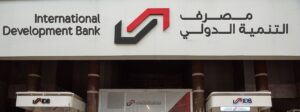The number of small-scale miners in mineral-rich Tanzania has more than doubled in a period of less than a year. Mining is the country’s leading revenue earner in terms of foreign export as well as increased government revenue.
The figures were made public by Prime Minister Kassim Majaliwa while addressing parliament. He said in the financial year 2020/2021 4,652 mining exploration licenses were issued to small and medium sized miners.
Notably Tanzania is the only country in the world with deposits of the precious stone tanzanite; Tanzania is also one of Africa’s largest gold producers.

While both of these top price precious stones and metals are more heavily mined by large international conglomerates, Tanzania’s willingness to provide licenses to native small-scale miners empowers local content.
We have all heard of the small-scale Masai prospector who became a world billionaire overnight after he struck a huge chunk of tanzanite. Small scale miner Saniniu Laizer made it to the Guinness book of world records when he mined out a shocking block of tanzanite that weighed in at 9.27kg and then another at 6.33kg and yet another at 5.27kg in June 2020.
This goes to show how increasing local content in the mining sector also improves sector performance and revenue for the country in general.
Building Local Content
The Prime Minister assured the House of the government’s commitment to the small and medium-scale prospectors. He said building local content is part of ensuring Tanzanians benefit from the resources of their country.
To empower local content in the mining sector, the PM said they will continue to allocate mining plots, issuing licenses in a timely manner, and also provide prospectors with the needed technological support.
To further support local content, Tanzania has greatly strengthened its mineral trading centers—a score of select areas where minerals can be safely traded. Tanzania has thus far also increased its mining markets from 28 to 39 and its trading centers from 28 to 41 all in under one year, between the start of 2020 to date.
There have been positive results already. The set-up of the mineral trading centers has helped increase government revenue a great fold. According to the PM, this is because the centers have been instrumental in curbing smuggling. As of 2019, the mining sector grew by 17.7 percent and to date, it has taken over the agriculture sector to become the country’s leading foreign exchange earner with gold at the apex of the mineral trade.
Previously the country suffered great losses as individual prospectors sought buyers of gemstones of their own accord. This meant there was little attention paid to the real value of the stones; neither was there any tax compliance due from the transactions.
Safety for the miners was also a great issue. There were numerous cases of attacks and outright gun battles between small-scale miners and that intent on unsavory conduct.
Mining: The Legal Framework
There has been much contention surrounding the issue of mining rights for small-scale miners. Legislators have repeatedly been at loggerheads as to how much rights the small-scale miners should get. The tug of war is as to whether large international companies are getting the lion’s share because they have the financial capital while the small-scale prospectors have to accept the short end of the stick.
The Mining Act, 2010 is the central legislation guiding the mining sector in Tanzania. The Act provides the legal framework for mineral exploration, exploitation, and marketing. The Act deals with the granting of various types of mineral concessions (referred to as ‘mineral rights’), royalties, compensation and resettlement issues, financial bond for mine closure, and penalty provisions for mining violations, etc.
This is also the Act that provides for the rights of the small-scale miners and protects them to conduct mining in licensed blocs. The set-up of the trading centers is also part of this Act and allows for the miners’ parameters to trade within their mining areas.
Here again, is an area of contention. Some are of the view that the law is restrictive as it does not allow miners to leave the mining area with the precious stones but to trade them at the trading center within the mining area.
An example is the walled tanzanite mining site of Mererani on the slopes of Mount Kilimanjaro built to increase security and prevent smuggling. Here, the miners are not allowed to leave the site with any of the spoils they mine; they are to sell them within the walls. However, if that had not been the case, the world may never have heard of the small-scale Masai prospector who turned into a billionaire overnight.
Also Read: What the AfCFTA Means for the Mining sector




